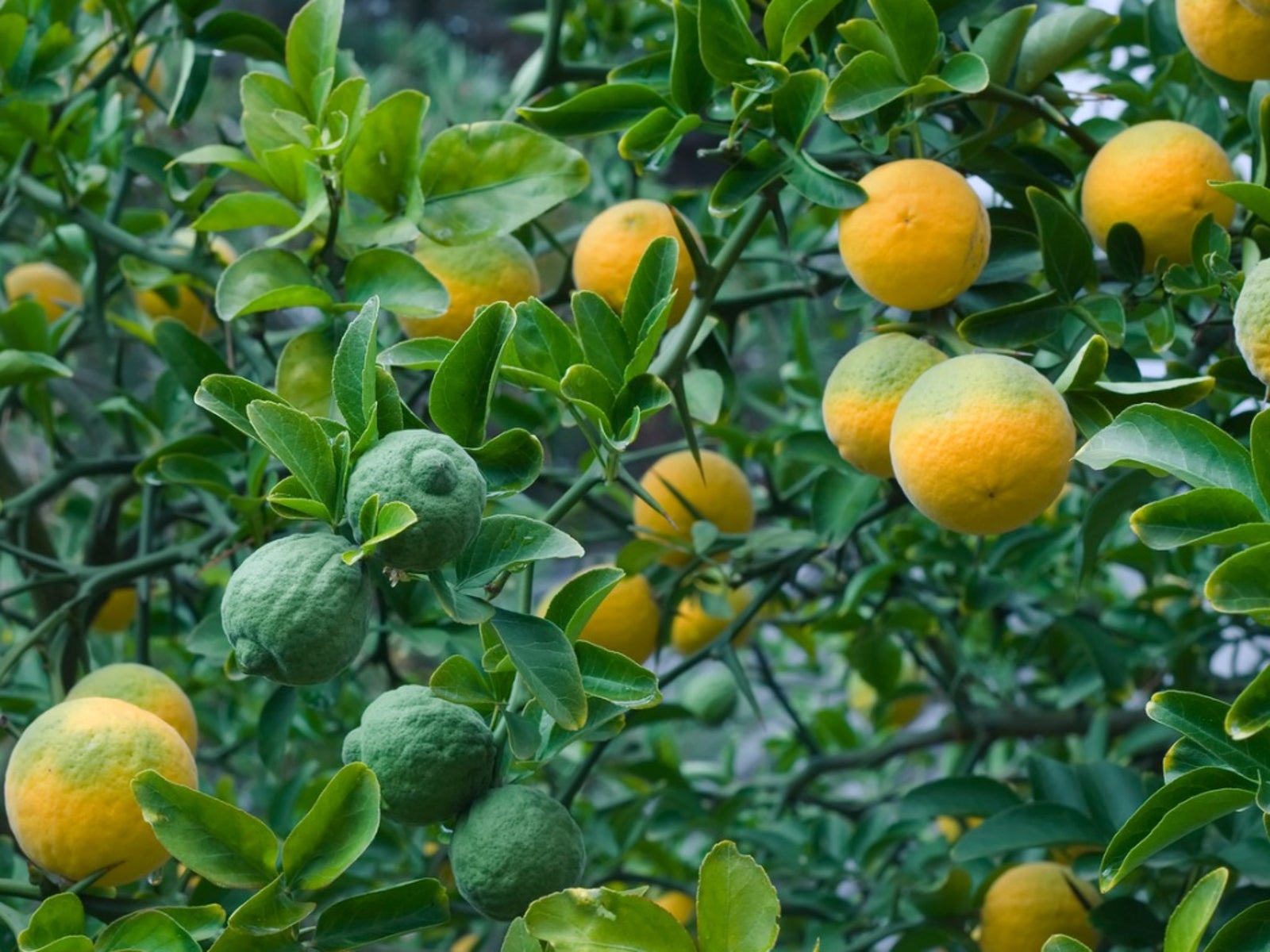Trifoliate Orange Uses: Learn About The Flying Dragon Orange Tree

The name alone has me hooked-- Flying Dragon bitter orange tree. A unique name to go with a unique appearance, but what is a flying dragon orange tree and what, if any, are trifoliate orange uses? Read on to learn more.
What is a Trifoliate Orange?
Flying dragon orange trees are cultivars of the trifoliate orange family, also known as Japanese bitter orange or hardy orange. That doesn't really answer the question, “What is a trifoliate orange?” Trifoliate is in reference to what it sounds like-- having three leaves. So, a trifoliate orange is simply a variety of orange tree with foliage emerging in groups of three. This hardy specimen of trifoliate orange, Flying Dragon (Poncirus trifoliata), has an unusual, contorted stem habit covered with thorns. It is related to the true citrus family or Rutaceae and is a small, multi-branching, deciduous tree growing 15 to 20 feet (5-6 m.) in height. Young branches are a sturdy, green tangle sprouting sharp 2 inch (5 cm.) long spines. As mentioned, it sports shiny, green, trifoliate leaflets. In early spring, the tree blooms with white, citrus-scented flowers. Come midsummer, green, golf-ball sized fruit are born. After leaf drop in the fall, the fruit yellows in color with a fragrant aroma and a thick peel not unlike a small orange. Unlike oranges, however, the fruit of Flying Dragon bitter orange contains an abundance of seeds and very little pulp.
Trifoliate Orange Uses
Although Flying Dragon had been listed on the Prince Nursery list in 1823, it did not garner any attention until William Saunders, a botanist/landscape gardener, reintroduced this hardy orange in the post-Civil War era. Trifoliate seedlings were shipped to California in 1869, becoming rootstock for commercial seedless naval orange growers of that state. Flying Dragon can be used in the landscape as a shrub or hedge. It is especially suited as a barrier planting, acting as a deterrent to dogs, burglars, and other unwanted pests, barring entry with a barrage of thorny limbs. With its unique corkscrew habit, it can also be pruned and trained as a small specimen tree. Flying Dragon bitter orange trees are winter hardy to minus 10 degrees F. (-23 C). They need full sun to light shade exposure.
Is Trifoliate Orange Edible?
Yes, trifoliate orange is edible, although the fruit is quite sour. Immature fruit and dried mature fruit are used medicinally in China where the tree hails from. The rind is often candied, and the fruit made into marmalade. In Germany, the juice of this fruit is stored for a two week period and then made into flavoring syrup. Flying Dragon is primarily pest and disease resistant, as well as heat and drought tolerant. A hardy, distinctive, smaller orange varietal with an awesome name, Flying Dragon is a wonderful addition to the landscape.
Gardening tips, videos, info and more delivered right to your inbox!
Sign up for the Gardening Know How newsletter today and receive a free copy of our e-book "How to Grow Delicious Tomatoes".

Amy Grant has been gardening for 30 years and writing for 15. A professional chef and caterer, Amy's area of expertise is culinary gardening.
-
 4 Superfast Composting Methods: Turn Waste Into Garden Gold In 30 Days Or Less
4 Superfast Composting Methods: Turn Waste Into Garden Gold In 30 Days Or LessTry the fastest composting methods to turbocharge your pile and transform kitchen scraps and garden waste into finished compost in just a few weeks.
By Mary Ellen Ellis
-
 Best Spider Plant Soil – Complete Soil Guide And Expert Tips For Keeping Plants Happy
Best Spider Plant Soil – Complete Soil Guide And Expert Tips For Keeping Plants HappySpider plants are fun and easy plants to grow, but what is the best soil for a spider plant? Selecting the right soil is important so they can thrive.
By Bonnie L. Grant